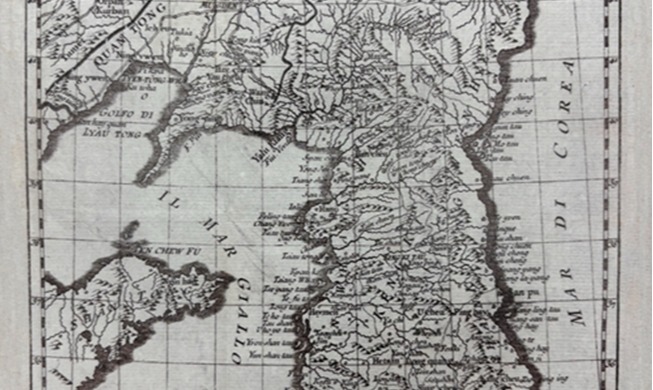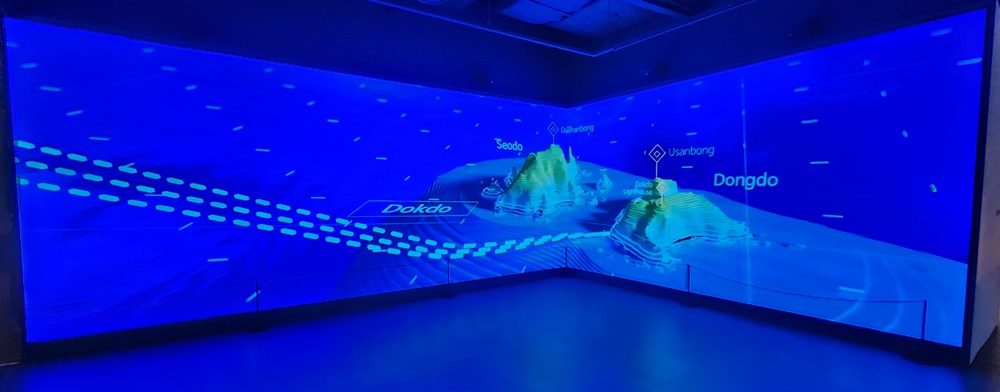
A media artwork on the wall greets visitors at the entrance of Dokdo Museum Seoul, which is on the first basement floor of the shopping mall Times Square in Seoul's Yeongdeungpo-gu District.
By Lee Jihae
Photos = Lee Jihae
Oct. 25 is Dokdo Day, which marks the day when Emperor Gojong in 1900 issued Imperial Decree No. 41 of the Korean Empire declaring Dokdo Island as part of Uldo-gun County.
This was both a domestic and global announcement that Dokdo was Korean territory and reflected the government's strong determination to protect the island.
To mark Dokdo Day, Korea.net takes a closer look at Dokdo Museum Seoul.
Dokdo Museum Seoul: center for history and interactive content
Run by the Seoul-based Northeast Asian History Foundation, Dokdo Museum Seoul was opened in 2012 in Seodaemun-gu District of the capital, but to attract more visitors, it was relocated in 2022 to the shopping mall Times Square in Yeongdeungpo-gu District. The wall on the entrance immediately draws attention by displaying the media artwork "Beautiful Korean Territory: Dokdo."
The interactive facility is packed with historical documents proving national sovereignty over Dokdo, as well as photos and videos of Dokdo's formation, ecosystem and historical significance. The exhibition "Galapagos, Ulleungdo (Island) and Dokdo in the East Sea" also explores the distinct natural environments of Ulleungdo and Dokdo and native flora and fauna.
More than a mere exhibition space, the museum is a pioneer in ensuring the correct historical understanding of Dokdo and promoting the island's value as national territory.
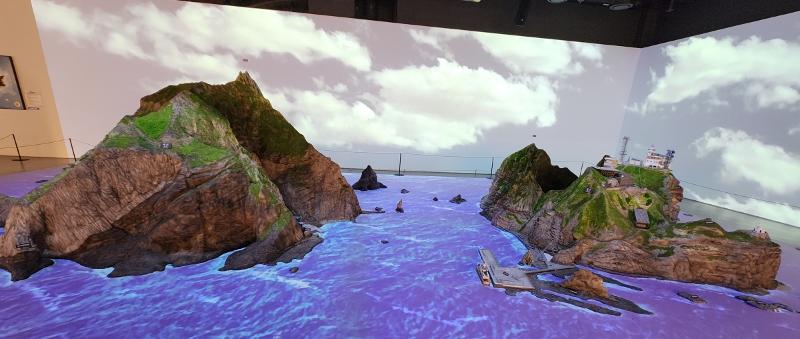
This model of Dokdo Island at Dokdo Museum Seoul has on the left Seodo (West Island) and Dongdo (East Island) on the right.
Dokdo: volcanic island with 4.6M years of accumulated strata
Dokdo is a volcanic island formed between 4.6 million and 2.5 million years ago by the solidification of lava that rose from 2,000 m deep in the East Sea. The island rose above the sea before Ulleungdo or Jeju Island.
Dokdo consists of two main islets, Dongdo (East Island) and Seodo (West Island), plus 89 small rocks. Dongdo has a wharf, Dokdo Security Police and a lighthouse and Seodo a residential facility. Visitors to Dokdo get off at the wharf on Dongdo.
The geological value of Ulleungdo and Dokdo was recognized through their 2012 designation as the nation's first geoparks.
Historical records prove national sovereignty over Dokdo
The many documents and records displayed at the museum attest to Dokdo's status as national territory. The most noticeable are Japan's Dajokan Order (1877) and Korea's Imperial Ordinance No. 41 (1900).
As part of a national survey under its drive to modernize, Japan's Meiji government in 1877 issued the Dajokan Order. As Japan's highest administrative body at the time, Dajokan issued an official order on March 29 that year saying, "Ulleungdo Island and one other island (Dokdo) are not part of Japanese territory."
This document clearly saying Dokdo is not Japanese land is crucial evidence for refuting Japan's recent claims to the island.
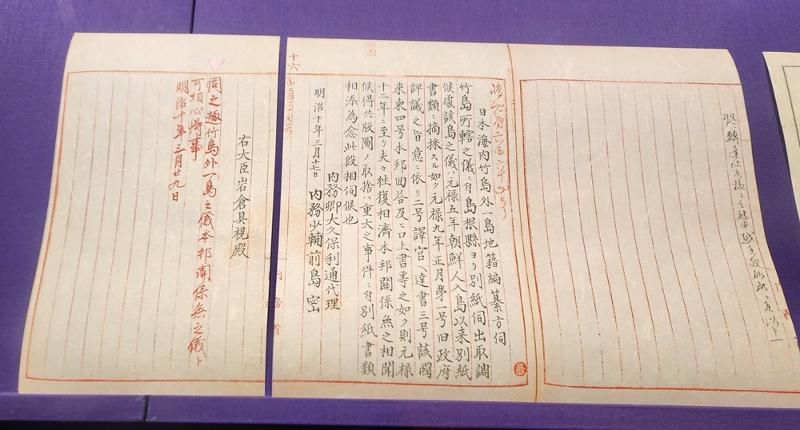
Japan's Dajokan Order at Dokdo Museum Seoul
Emperor Gojong in 1900 issued Imperial Ordinance No. 41 to elevate Ulleung-gun County to Uldo-gun County, and had the Uldo-gun chief manage the islands of Ulleungdo, Jukdo and Seokdo (Dokdo). By putting Dokdo under the jurisdiction of Uldo-gun, the emperor announced that the Korean Empire had sovereignty over Dokdo, a declaration that was made official in the empire's gazettes both at home and abroad.
Even to this day, domestic maritime police guard Dokdo as Korea effectively controls the island. The presence of such guards shows that Dokdo is an administrative district of the country.
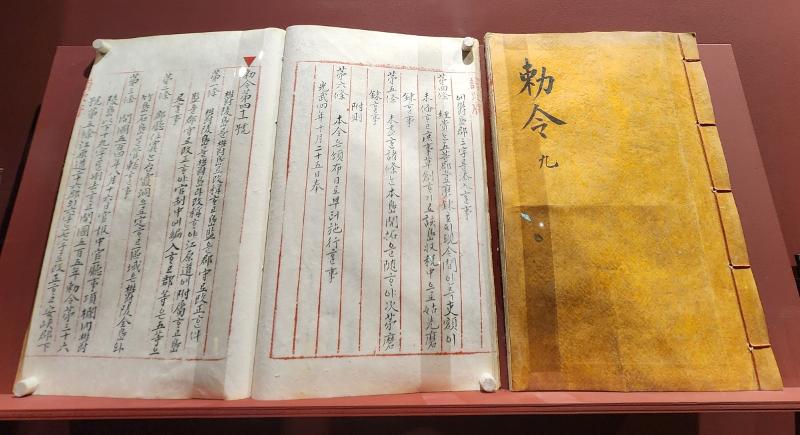
Korean Empire's Imperial Ordinance No. 41 at Dokdo Museum Seoul
Guardians of Dokdo: sapsaree dogs and Dokdo sea lions
The museum also features the island's symbolic animal guardian, which is the indigenous dog breed sapsaree. Such dogs were massacred by Japan during Japanese occupation of the Korean Peninsula from 1910-45, but did not go extinct. Since they were first brought to Dokdo in 1998, the dogs guard the island with Dokdo Security Police as symbolic guardians of the island, not just mere animals.
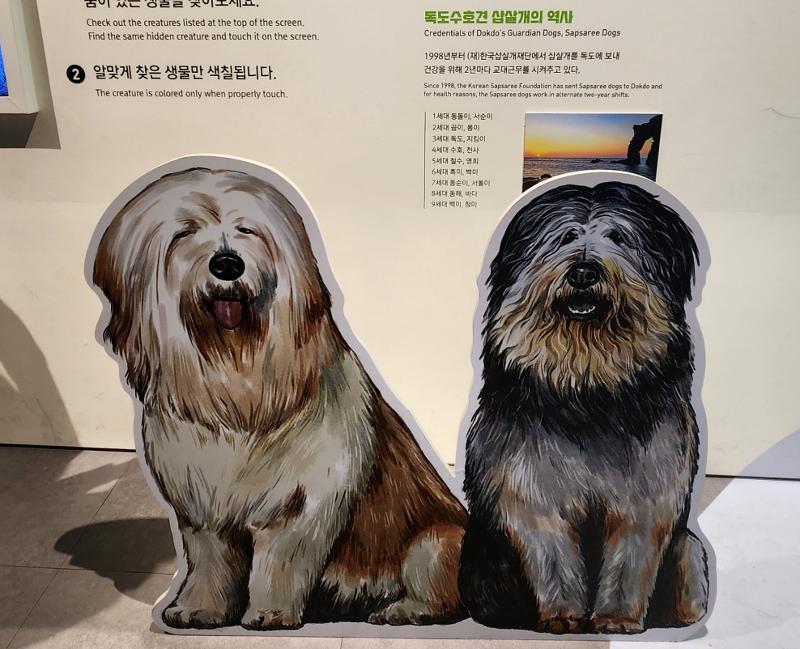
Images of sapsaree dogs displayed at Dokdo Museum Seoul
The museum also displays Dokdo sea lions that once roamed waters around the island. On Feb. 22, 1905, Japan's Shimane Prefecture used a public notice to illegally annex Dokdo, and in the process, Japanese fisherman Nakai Yozaburo gained the exclusive right to hunt such creatures.
This led to the indiscriminate hunting and near extinction of sea dogs in the 1940s. In 1994, the International Union for Conservation of Nature officially declared them extinct.
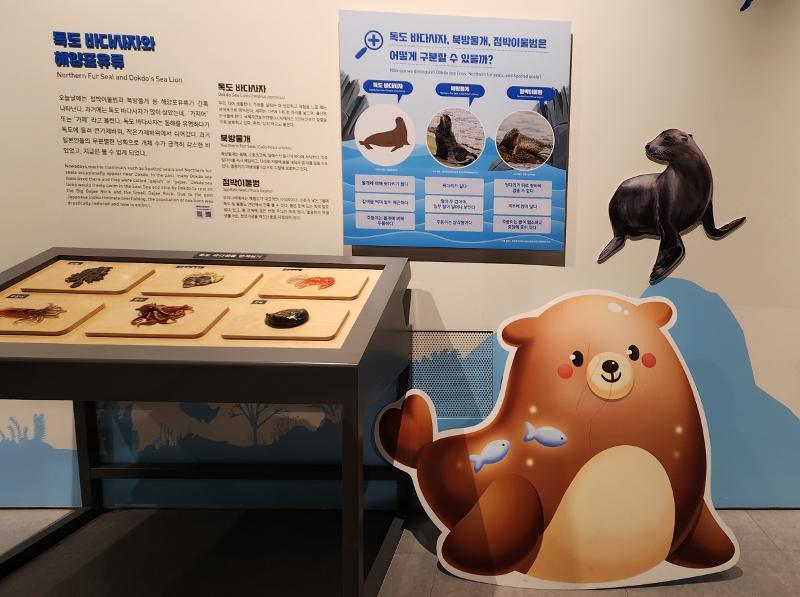
This display is on Dokdo sea lions at Dokdo Museum Seoul.
